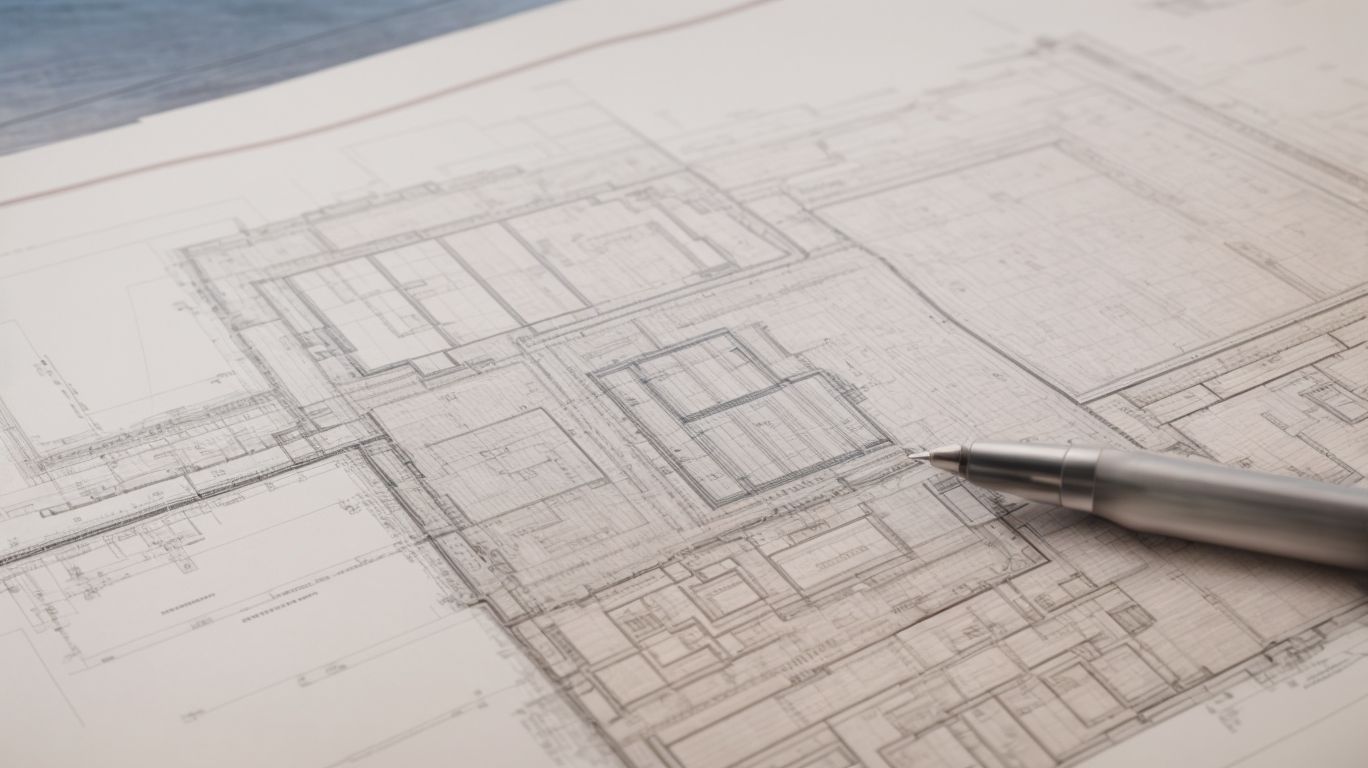
Designing Your Second Story Addition: Essential Tips for Bay Area Homes
Considering adding a second story to your Bay Area home? This article will guide you through the process, from the benefits of a second story addition to essential tips for designing the perfect space.
Discover how to increase living space, preserve yard space, and add value to your home. Learn how to plan for your addition, navigate local building codes, and choose the right contractor.
Find out about common challenges and how to overcome them. Get ready to transform your home with a second story addition!
What Is a Second Story Addition?
A second story addition involves expanding a home vertically by adding another level above the existing structure, enhancing the living space and overall functionality of the property.
This type of home renovation project not only increases the square footage of the house but also offers the opportunity to revamp the design and layout of the entire living space.
Considerations for a second-story addition include ensuring that the new structure is seamlessly integrated with the existing one, maintaining structural integrity, and complying with local building codes.
Architects play a crucial role in space planning, ensuring that the added level is aesthetically pleasing and functional.
The benefits of a second-story addition extend beyond additional living space to include increased property value and improved overall appeal.
Why Consider a Second Story Addition for Your Bay Area Home?
Considering a second story addition for your Bay Area home can significantly enhance your living experience, increase property value, and elevate the overall aesthetic appeal of your residence.
By opting for this type of construction project, you are not only expanding your living space but also boosting the market worth of your property. In the competitive Bay Area real estate market, having a second story addition can set your home apart and attract more potential buyers down the line.
Investing in energy-efficient features during the renovation can lead to long-term savings on utility bills while also contributing to a greener lifestyle. The return on investment (ROI) for such upgrades is impressive, making it a wise financial decision in the long run.
Increase Living Space
Expanding the living space through a second story addition offers the opportunity to accommodate growing family needs, enhance functionality, and optimize the interior layout for improved spatial utilization.
With careful consideration of floor plans and room addition, the expansion allows for the creation of additional bedrooms, bathrooms, or even a home office. It is crucial to ensure structural integrity by working with professionals to maintain the overall stability of the existing structure and prevent any issues related to weight distribution and load-bearing capacities. Achieving harmony in design between the existing space and the new addition is essential to create a cohesive and aesthetically pleasing living environment.
Preserve Yard Space
Opting for a second story addition can help preserve valuable yard space, promote sustainable building practices, and enhance the overall visual appeal of your property, blending functionality with environmental consciousness.
By utilizing sustainable materials such as energy-efficient roofing and eco-friendly foundations, you not only reduce your carbon footprint but also contribute to a healthier environment.
Incorporating green building practices in your second story addition project can significantly lower energy costs and increase the overall efficiency of your home. Considering exterior design elements that maximize natural lighting not only adds a warm ambiance to your living space but also reduces the need for artificial lighting, further enhancing the eco-friendliness of your home.
Add Value to Your Home
Adding a second story to your home can significantly increase the property’s resale value, provide a high return on investment, and serve as a long-term asset in the context of property enhancement and market appreciation.
This type of renovation has become increasingly popular due to the financial benefits it brings. While the initial construction costs may seem significant, the potential for a substantial increase in property value far outweighs the expenses. By adhering to quality control measures and following building regulations, homeowners can ensure that the second story addition not only adds living space but also enhances the overall appeal of their property. In the long run, this investment is likely to yield profitable returns, especially in terms of appreciation in real estate markets.
How to Plan for a Second Story Addition?
Effective planning is essential for a successful second story addition project, involving considerations such as architectural design, budgeting, and securing the necessary permits to ensure compliance with building regulations.
To begin the process, it’s crucial to start by identifying a clear design concept that aligns with your vision for the additional space. This concept will serve as the foundation for the project’s development and guide subsequent decisions.
Once you have a solid design in place, the next step is to navigate the permit acquisition process. This involves researching the local regulations, preparing the required documentation, and submitting the applications in a timely manner to avoid delays.
Budget allocation is another critical aspect; meticulously outlining expenses for materials, labor, and unforeseen costs should be a part of the financial plan.
Selecting the right contractor is key to ensuring that the project is executed efficiently within the set timeline without compromising on quality control.
Consult with a Professional
Before embarking on a second story addition, it is advisable to consult with experienced professionals, including architects, structural engineers, and contractors, to assess the feasibility of the project and ensure structural integrity.
These professionals play vital roles in the planning phase of a second story addition project. Structural engineers are instrumental in designing the framework that will support the additional weight of the second story. Contractors bring practical insights into the construction process, ensuring that the project is executed effectively and efficiently. Site evaluations are crucial as they help in identifying any potential challenges that may arise during the construction phase. This detailed assessment also aids in selecting the appropriate materials and obtaining the necessary building permits to adhere to local regulations.
Determine Your Budget
Establishing a realistic budget is a critical step in planning for a second story addition, as it helps outline the financial scope of the project, allocate funds for construction costs, and prevent budget overruns during the renovation process.
Key considerations for determining the budget include materials selection, as higher-end materials can drive up costs significantly. To manage costs effectively, it is advisable to research and compare prices from different suppliers. Allocating funds strategically to areas such as structural modifications, utilities, and finishing touches can help maintain budgetary control. Factors influencing construction costs, such as labor expenses and the complexity of the design, should also be factored in when estimating the overall budget for a second-story addition.
Consider Local Building Codes
Compliance with local building codes, zoning laws, and permit requirements is essential when planning a second story addition, as adherence to regulations ensures the safety, quality, and legality of the construction project.
Understanding and following local building regulations, zoning laws, and permit processes is crucial to prevent potential issues that may arise during the construction of a second-story addition. Failure to comply with these guidelines could result in delays, fines, or even the requirement to dismantle unauthorized structures. Building codes dictate structural integrity and safety standards, while zoning laws govern land use and property boundaries. Obtaining necessary permits involves undergoing inspections to verify that the construction meets the specified requirements, ensuring that the project conforms to safety measures and legal standards.
What Are the Essential Tips for Designing a Second Story Addition?
Designing a second story addition requires careful consideration of aesthetics, space planning, and interior design elements to create a harmonious and functional living space that aligns with your lifestyle and preferences.
Incorporating elements of the exterior design into your second story addition can enhance the overall look and feel of your property.
When selecting a color palette for your new addition, opt for hues that complement the existing structure while adding a fresh touch.
Maximizing functionality through well-thought-out interior layout planning is crucial for ensuring every square footage is utilized efficiently.
Customizations such as built-in storage solutions or unique architectural details can reflect your personal style and elevate the visual appeal of your second story space.
Consider the Aesthetics
When designing a second story addition, paying attention to aesthetics is crucial for creating a visually appealing and cohesive architectural style that complements the existing structure while incorporating elements such as texture, color palette, and design harmony.
Consideration of aesthetics goes beyond just the exterior appearance of the second story addition; it also involves the interior design aspects. Integrating modern design elements with traditional touches can add depth and character to the space. Choosing materials and textures that resonate with the overall theme of the home is key to achieving a harmonious look. Color coordination plays a vital role in creating a cohesive and inviting environment, while architectural harmony ensures that the addition seamlessly blends with the existing structure.
Plan for Natural Light
Integrating natural light into the design of a second story addition can enhance the ambiance, energy efficiency, and overall comfort of the living space, with features like skylights playing a key role in promoting sustainability and well-being.
By strategically placing windows to optimize daylight penetration, occupants can benefit from reduced reliance on artificial lighting, resulting in lower energy consumption and operational costs. Incorporating passive solar design principles can further maximize the benefits of natural light, providing warmth during colder months and promoting natural ventilation for a healthier indoor environment.
This thoughtful approach not only enhances the aesthetic appeal of the space but also underscores the importance of sustainable lighting solutions in modern green building practices.
Think About Access and Traffic Flow
Considering the access points, traffic flow, and functional aspects of the second story addition layout is essential for ensuring convenience, safety, and efficient movement within the expanded living space, with features like well-designed stairs playing a crucial role in space utilization.
Strategic placement of stairs not only optimizes functionality but also contributes to enhancing the overall visual appeal of the interior. By prioritizing traffic circulation patterns and ensuring a seamless flow between different areas, the usability and safety of the second story addition are significantly improved.
Implementing space-efficient design strategies allows for the maximization of available square footage, creating a harmonious balance between aesthetics and practicality. Choosing the right stair design that fits the space seamlessly is key to achieving a cohesive and user-friendly layout.
Consider the Structural Requirements
Addressing the structural requirements of a second story addition is crucial to ensure stability, durability, and safety, with a focus on foundational elements, structural integrity, and quality control measures to uphold the building’s soundness and longevity.
A critical aspect of incorporating a second story into an existing structure involves evaluating and reinforcing the foundation to support the increased load.
Careful examination of the existing framing system and materials selection is essential to ensure compatibility and strength.
Structural integrity assessments conducted at key stages of the project help in identifying any vulnerabilities and addressing them promptly.
Building inspections, adhering to local codes and regulations, are integral in verifying that the construction meets safety standards and quality requirements.
What Are the Common Challenges of a Second Story Addition?
Undertaking a second story addition project may present challenges related to plumbing and electrical work, weather conditions, and safety measures, requiring careful planning, expert execution, and adherence to building codes for successful completion.
It is crucial to address the complexities of integrating the heating system of the existing structure with the new addition. Ensuring proper sizing and compatibility of plumbing installations, such as pipes and fixtures, becomes paramount to prevent future leaks or malfunctions.
Weather-related considerations, like protecting materials from rain or extreme temperatures during the construction phase, are essential to maintaining the structural integrity. Implementing safety protocols, including using appropriate scaffolding to prevent falls and following electrical safety practices, can mitigate potential hazards on-site.
Structural Issues
Dealing with structural issues in a second story addition requires the expertise of a structural engineer, adherence to building codes, and thorough inspection processes to identify and rectify any structural deficiencies, ensuring the overall integrity of the construction project.
One of the primary challenges associated with structural issues in a second story addition is ensuring that the new load-bearing elements can adequately support the additional weight without compromising the existing structure. This necessitates a comprehensive structural assessment to determine the feasibility of the proposed changes and ensure compliance with relevant building codes.
Coordination between different trades and professionals involved in the project is crucial to seamlessly integrate the new structure with the existing one. Regular inspections at key project milestones are essential to verify structural stability and address any emerging concerns promptly.
Plumbing and Electrical Work
Managing plumbing and electrical work in a second story addition project necessitates clear communication with contractors, meticulous planning for wiring and piping installations, and coordination to ensure seamless integration of these essential systems into the new structure.
One of the key challenges faced during such projects is the intricate nature of electrical systems, requiring experienced professionals to navigate the complexities of circuitry and power distribution effectively. Selecting the right contractor with expertise in both plumbing and electrical work is crucial to the success of the project.
By developing a comprehensive plan that considers the layout of the new space and the existing infrastructure, potential issues can be identified and addressed proactively, reducing the risk of costly delays or rework. Seamless integration of plumbing and wiring systems not only ensures functionality but also enhances the overall safety and efficiency of the home.
Weather Conditions
Mitigating the impact of weather conditions on a second story addition involves implementing effective weatherproofing measures, selecting durable roofing materials, and emphasizing weather-resistant construction practices to safeguard the structure against external elements and ensure long-term durability.
Addressing weather challenges during the construction of a second-story addition is crucial for enhancing the building’s sustainability and resilience. By utilizing sustainable materials like metal or concrete tiles for roofing, homeowners can boost energy efficiency and reduce environmental impact. Incorporating climate-resistant construction techniques such as proper insulation and sealed seams can prevent water infiltration and mold growth, ensuring a structurally sound and weatherproof exterior facade. Prioritizing these aspects not only strengthens the building’s ability to withstand harsh weather conditions but also promotes a more sustainable and eco-friendly living environment.”
How to Choose the Right Contractor for Your Second Story Addition?
Selecting the right contractor for your second-story addition is crucial for ensuring project success, effective communication, quality control, and adherence to timelines within the framework of a well-coordinated construction process.
- When evaluating potential contractors, it is important to inquire about their experience in handling similar projects and their qualifications, such as licenses and certifications.
- Consider their project management skills, as efficient management can greatly impact construction timelines.
- Checking contractor reviews and requesting references can provide insight into the quality of their work and customer satisfaction.
- Discussing their communication strategies and quality assurance processes ensures that expectations are aligned and potential issues are addressed proactively.
Research and Get Referrals
Conducting thorough research, seeking referrals, and reviewing past projects are essential steps in selecting local contractors for your second story addition, ensuring effective communication, skillful execution, and quality outcomes for your construction endeavor.
Engaging local contractors not only supports the community but also provides a level of familiarity with local building codes and regulations, streamlining the project approval process.
By reviewing project portfolios, homeowners gain insights into the contractors’ experience and capabilities, helping them make informed decisions.
Clear communication channels foster a collaborative environment, where expectations are aligned, potential challenges are addressed proactively, and solutions are implemented efficiently.
Establishing trust through transparent communication is key to achieving a successful project outcome.
Check for Licenses and Insurance
Verifying licenses, insurance coverage, and compliance with building regulations are critical factors to consider when choosing a contractor for your second story addition, ensuring legal conformity, project safety, and quality assurance throughout the construction process.
By thoroughly checking the licenses of your chosen contractor, you can rest assured that they have met the necessary requirements set by building codes and regulations.
Ensuring adequate insurance coverage is in place will protect you from any liability in case of accidents or property damage during the construction phase.
Adherence to regulatory standards not only ensures the legality of the project but also guarantees that all necessary permits are obtained and inspection procedures are followed diligently to maintain safety measures and operational integrity in every aspect of the construction process.
Review Past Projects
Reviewing a contractor’s past projects, assessing project management capabilities, evaluating adherence to timelines, and scrutinizing quality control measures are essential steps in identifying the right fit for your second story addition, ensuring a smooth and successful construction process.
By examining previous projects, you can gain valuable insights into how well a contractor performs under pressure and whether they consistently deliver within set timelines. This evaluation process allows you to gauge the contractor’s track record of meeting quality standards and project expectations. Reviewing past projects enables you to assess their ability to stay within budget constraints while maintaining a high level of craftsmanship. Selecting a contractor with a strong reputation for project evaluation and budget compliance is crucial for the successful completion of your second story addition.




No Comments